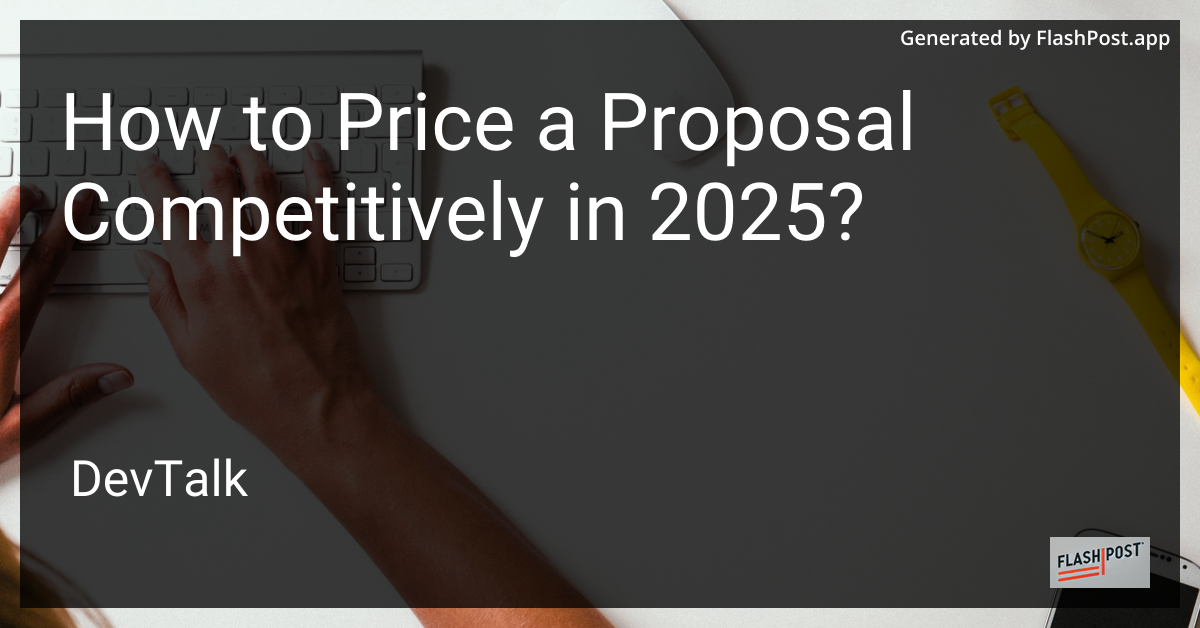How to Price a Proposal Competitively in 2025?
 # How to Price a Proposal Competitively in 2025
# How to Price a Proposal Competitively in 2025
In the rapidly evolving landscape of 2025, pricing a proposal competitively requires strategic insight and a keen understanding of market dynamics.
With advancements in technology, shifts in client expectations, and increased competition, mastering the art of proposal pricing is crucial for success.
Understanding the Market Landscape
Pricing strategies in 2025 must align with current market trends and the specific needs of target clients. Conduct in-depth market research to:
- Analyze competitor pricing models.
- Explore emerging market trends.
- Understand client expectations and budgetary constraints.
Key Factors Influencing Proposal Pricing
In shaping a competitive pricing strategy, consider the following key factors:
1. Cost Analysis
Conduct thorough cost analysis to determine the minimum viable price for your proposal. Factor in:
- Direct costs: materials, labor, and services.
- Indirect costs: overheads and administrative expenses.
- Contingency: account for unforeseen expenses.
2. Value Proposition
Clearly define your unique value proposition. Highlight the benefits and solutions your proposal offers beyond price, such as:
- Quality and reliability of deliverables.
- Innovative approaches.
- Tailored solutions that address specific client needs.
3. Client Relationship
Building strong client relationships plays a pivotal role in proposal pricing. Consider:
- Historical pricing models used with the client.
- Client's budget history and preferences.
- Potential for long-term partnerships.
Competitive Strategies for 2025
Adopt these competitive strategies to enhance your proposal pricing in 2025:
1. Dynamic Pricing
Implement dynamic pricing strategies to adapt to real-time market conditions and client negotiations. Utilize data analytics to adjust pricing based on:
- Demand fluctuations.
- Competitor pricing changes.
- Client feedback and interactions.
2. Tiered Pricing Structures
Offer tiered pricing structures to provide clients with flexible options. Clearly articulate the varying levels of deliverables and associated costs:
- Basic: Essential services at a lower price point.
- Standard: Enhanced services with added value.
- Premium: Comprehensive offerings with exceptional benefits.
3. Incentives and Discounts
Provide strategic incentives and discounts to attract and retain clients. Consider:
- Early-bird discounts for pre-commitment.
- Volume discounts for bulk contracts.
- Referral bonuses to encourage client recommendations.
Staying Ahead: Technological Integration
Leverage technological advancements to enhance your proposal pricing strategies:
- Implement AI-driven price optimization tools to predict competitive pricing points.
- Use blockchain technology for transparent and secure pricing agreements.
- Employ advanced CRM systems to manage client interactions and feedback effectively.
Conclusion
Pricing a proposal competitively in 2025 demands a balanced approach that considers cost, value, and client relationships. By staying informed about market trends and leveraging technological tools, you can craft a pricing strategy that distinguishes your proposals in a competitive market.
For further insights into proposal writing, consider exploring research proposal writing and nonprofit project proposals for comprehensive understanding and inspiration.
By refining your pricing strategies today, you'll position yourself for greater success in the competitive landscape of 2025.